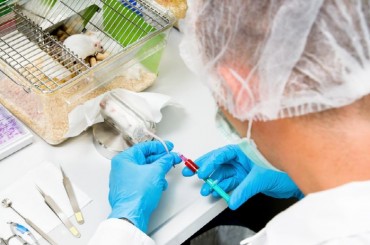
The frequency of these exams has been on the rise for three consecutive years, from 5.9 per person in 2020 to 6.8 in 2022. (Captured image from Yonhap News TV)
SEOUL, Feb. 19 (Korea Bizwire) –South Koreans are undergoing medical radiation examinations at an average of 6.8 times per person annually, a figure that significantly surpasses the global average.
According to data released by the Korea Disease Control and Prevention Agency on February 18, the frequency of these exams has been on the rise for three consecutive years, from 5.9 per person in 2020 to 6.8 in 2022.
This rate is more than eleven times higher than the global average of 0.6 exams per person per year, based on data from 2009 to 2018. When compared to other countries such as Switzerland (1.1 exams per person in 2018), the United States (1.1 in 2016), and an average of 0.5 across 36 European countries in 2014, South Korea’s figures stand out starkly.
The average radiation dose per person in South Korea has also seen an upward trend, from 2.46 mSV (millisieverts) in 2020 to 2.75 mSV in 2022, levels that the KDCA acknowledges are somewhat higher than those in other countries.
The analysis, which utilized data from various institutions including the Health Insurance Review & Assessment Service, the National Health Insurance Service, the Ministry of National Defense, the Korean Tuberculosis Association, and the Ministry of Education, revealed that the total number of medical radiation exams conducted across the nation rose by 14.6% from 308 million in 2020 to 352 million in 2022.
Concurrently, the collective annual radiation dose for the population increased by 11.2% from 127,524 man Sv in 2020 to 141,831 man Sv in 2022, with “man Sv” representing the cumulative individual radiation doses within a group.
Among these exams, general radiography accounted for 80.2% of the total, with dental radiography at 12.1%, computed tomography (CT) scans at 3.8%, and mammography at 2.1%. Despite CT scans making up only 3.8% of the total exams, they contributed to 65.6% of the total radiation dose due to their higher radiation levels per exam.
To reduce unnecessary radiation exposure among the public, Ji Young-mi, the director of the KDCA, stated that the organization is providing medical imaging diagnosis guidelines for doctors to reference when deciding on imaging tests.
She emphasized the agency’s commitment to ensuring a safe environment for the use of medical radiation.
M. H. Lee (mhlee@koreabizwire.com)






